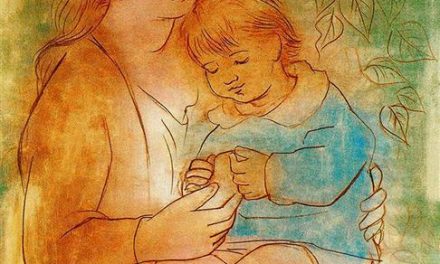Responsorial Psalm – Psalm 118:2-4, 13-15, 22-24
Second Reading – Revelation 1:9-11a, 12-13, 17-19
Gospel Reading – John 20:19-31
There is a curious thread about sight connecting this week’s readings.
The role of sight is prominent in the Gospel reading, of course. First, when the disciples who encounter Jesus on the first day report their experience to Thomas (who had not been with them at the time), they emphasize the sight they beheld. “We have seen the Lord.”
Thomas, who is incredulous (to borrow Caravaggio’s famous phrasing), provides a very incarnational response. “Unless I see the mark of the nails in his hands and put my finger into the nailmarks and put my hand into his side, I will not believe.”
While much of the attention falls on his tactile request, the conclusion of this Gospel story reminds us of the importance of sight in the whole process. Jesus does not ask Thomas, “Do you believe because you can touch me?,” but rather, “Have you come to believe because you have seen me?”
I am always tempted to read the next line as a saying of encouragement for present-day Christians, assuming that “blessed are those who have not seen and have believed” refers to those of us who did not have the luxury of encountering the historical Jesus directly in the flesh the way Thomas and the other disciples did. As I look at the rest of the readings for ths Sunday, however, I am now viewing this sight motif in a different light.
On one hand, my conventional interpretation still seems to track with the message conveyed in the Second Reading from the Book of Revelation. John recounts a vision, which included the command, “Write on a scroll what you see.” The specifics that are conveyed are, in his account, exactly what he saw in that vision. We read not what we see, but an explanation of what he saw.
This description highlights the mediated nature of revelation in the Bible. As the Second Vatican Council’s Dogmatic Constitution on Divine Revelation (Dei Verbum) makes clear, there is a prominent and necessary interaction between God, who inspires the text, and the human writers who are the “true authors” (no. 11). The result is a situation in which Scripture reveals what God wants us to know but always in and through the language of the human author, who may have human limitations in the way that message is conveyed (see no. 12). In Scripture, then, we come to know God, but we do not “see” God in the same way the authors of the text did.
This interpretation suggests that it is quite reasonable to read “Blessed are those who have not seen and have believed” as a reference to those of us who rely on this mediated form of revelation. Before we take too much solace in this benediction, though, I want to stress that, on the other hand, there is an important way in which we too come to see God even today.
The shift in what it means to “see” God stands out in the First Reading from Acts of the Apostles. This reading stresses the “many wonders and signs…done among the people at the hands of the apostles,” including great healings. Acts of the Apostles insists that these interactions with Peter and the other apostles led “greater numbers of men and women” to join the nascent church, meaning that the powerful experience of God’s work in this early Christian community brought people to believe.
Some might be tempted to view these new believers with the same sense of envy that sometimes shows up in the story of Doubting Thomas—these people were so lucky to have seen miracles first-hand; it would be so much easier to believe I saw what they saw.
While this reaction is understandable, it is important to recognize that these early followers are already one step removed from the direct experience of Jesus that Thomas had. In an important way, they had to believe without seeing, at least when compared to Thomas. And yet, they clearly see something that leads them to believe.
This experience of the early converts reminds me that we actually do have a way of seeing Jesus. Our belief may not be based on the direct, physical encounter and immediate sight that challenged Thomas’s doubts, but it is no less influenced by sight. I see Jesus in the people I encounter and the selflessness they show. I see Jesus in the community of faith gathered to witness to his presence in the world, and, of course, in the real presence of the Eucharist, ”the source and summit” of our faith. Moreover, as Mother Teresa reminded us (in a reference to Matthew 25), we can see Jesus in his “most distressing disguise” in the face of the poor.
As I think about these opportunities to experience Jesus, then, I am grateful for the ways God is active in the world, and I am less apt to apply “Blessed are those who have not seen and have believed” to myself. Instead, I tend to turn Jesus’s question toward myself and ask, “Have you come to believe because you have seen me?”
Yes, “My Lord and my God.”




